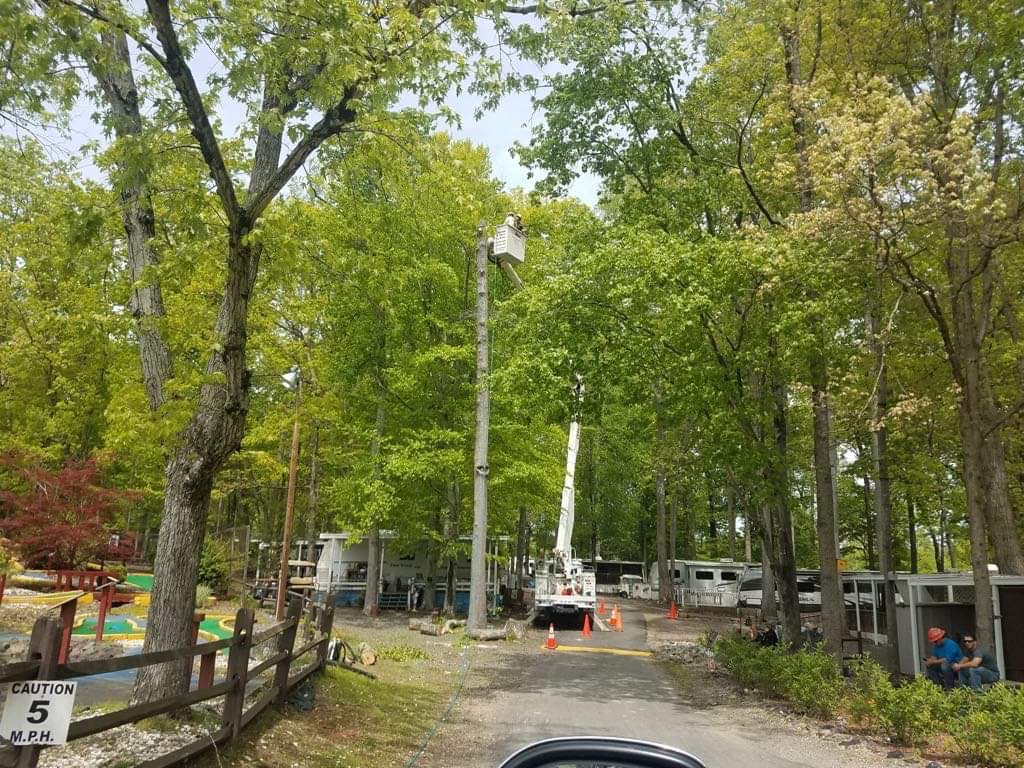Summer is here, bringing with it scorching temperatures and relentless sun. For homeowners, tree care enthusiasts, and members of the gardening community, this means it’s time to gear up and prepare your trees for the intense summer heat. Trees, like any living organisms, need a little extra attention to thrive in extreme conditions. From watering techniques to protective measures, we’ve got you covered.
Why Summer Tree Care is Crucial
Summer can be a challenging season for trees. The combination of high temperatures, dry conditions, and increased exposure to sunlight can stress trees, making them more susceptible to diseases and pests. For homeowners who cherish their green spaces, taking proactive steps to care for trees during summer not only enhances the beauty of your gardens but also ensures the longevity and health of your beloved trees.
Impact of Heat on Trees
Extreme heat can lead to water loss through a process called transpiration. When trees lose more water than they can absorb, they become dehydrated and stressed. This can cause leaves to wilt, turn yellow, or even drop prematurely. Furthermore, heat stress can weaken trees, making them more vulnerable to pests and diseases, which can further compromise their health.
Benefits of Proper Summer Tree Care
Taking the time to prepare your trees for summer can yield numerous benefits. Well-maintained trees provide shade, reduce energy costs, improve air quality, and enhance the aesthetic appeal of your property. Additionally, healthy trees contribute to the overall ecosystem by providing habitats for wildlife and improving soil health. Proper care ensures that your trees not only survive but thrive during the hottest months of the year.
Deep Watering Techniques
Proper watering is the foundation of summer tree care. Deep watering encourages deep root growth, which helps trees access moisture from deeper soil layers, making them more resilient to heat.
Frequency of Watering
Instead of watering your trees shallowly and frequently, opt for deep and infrequent watering sessions. This method encourages roots to grow deeper into the soil, providing better stability and access to moisture. Aim to water your trees deeply once or twice a week, depending on the tree species and soil type.
Timing Matters
Watering early in the morning is ideal. During the early hours, temperatures are cooler, reducing evaporation rates and allowing water to penetrate the soil effectively. This gives the tree ample time to absorb moisture before the heat of the day sets in. Avoid watering during the hottest part of the day, as it can lead to water loss through evaporation.
Mulching and Mulching Techniques
Mulching is a simple yet effective way to retain soil moisture, moderate soil temperature, and reduce competition from weeds. Applying mulch around the base of your trees can significantly improve their ability to cope with summer heat.
Application of Mulch
Apply a 2-4 inch layer of mulch around the base of the tree, extending out to the drip line (the outer edge of the tree’s canopy). Ensure that the mulch is evenly spread and does not touch the tree trunk, as this can cause rot and other issues. Organic mulches like wood chips, straw, or compost are excellent choices, as they gradually break down and enrich the soil.
Benefits of Mulching
Mulch acts as a protective barrier, conserving soil moisture by reducing evaporation. It also helps regulate soil temperature, keeping roots cooler during hot days. Furthermore, mulch suppresses weed growth, reducing competition for water and nutrients. Over time, as organic mulch decomposes, it improves soil structure and fertility, benefiting the tree’s overall health.
Pruning for Summer
Pruning is an essential aspect of tree care, especially during summer. Proper pruning improves air circulation, reduces density within the canopy, and removes dead or damaged branches, helping trees cope better with heat stress.
Removing Deadwood
Start by removing any dead, damaged, or diseased branches. These branches not only pose a risk during storms but also divert the tree’s energy away from healthy growth. Use clean, sharp tools to make clean cuts and prevent the spread of diseases. Regularly inspect your trees and prune as needed to maintain their health and safety.
Thinning the Canopy
Thinning the canopy involves selectively removing branches to improve air circulation and light penetration. By reducing the density of the canopy, you help the tree cool down more effectively and reduce the risk of heat stress. Thinning also allows for better distribution of resources, promoting healthier growth and reducing the likelihood of pest infestations.
Fertilizing for Optimal Growth
Fertilizing your trees provides essential nutrients that support their growth and resilience. However, timing and type of fertilizer are crucial factors to consider when preparing your trees for summer.
Timing of Fertilization
The best time to fertilize your trees is in early spring, before the growing season begins. This allows the tree to absorb nutrients and strengthen its root system before the summer heat arrives. Fertilizing during the peak of summer can be risky. The intense heat and drought conditions common in many regions during this time can exacerbate the stress on your trees. Instead of applying fertilizer in the summer, it’s better to focus on ensuring adequate hydration and protection from the elements. If you notice signs of nutrient deficiency, such as discolored leaves or stunted growth, consider a mild, slow-release fertilizer applied early in the morning or late in the evening to minimize stress. Always prioritize watering and mulching before additional fertilization efforts during the summer months.
Monitoring and Protection
Regular monitoring and protective measures are essential to ensure your trees remain healthy and resilient throughout the summer.
Regular Inspections
Inspect your trees regularly for signs of stress, such as wilting, yellowing leaves, or leaf drop. Early detection of issues allows you to address them promptly and prevent further damage. Look for signs of pests, diseases, and other stress factors that may affect your trees’ health.
Protective Measures
Consider using shade cloth or other protective methods to shield young or newly planted trees from intense sun exposure. Shade cloth can help reduce the impact of direct sunlight, preventing sunburn and heat stress. Additionally, providing windbreaks or barriers can protect trees from hot, drying winds that can exacerbate moisture loss.
Prepare Your Trees for the Summer Heat
Preparing your trees for the summer heat is essential for their health and longevity. By following these steps—deep watering, proper mulching, strategic pruning, timely fertilization, and regular monitoring—you can ensure your trees thrive even in the hottest months. Remember, healthy trees not only enhance the beauty of your property but also contribute to a healthier environment.
If you find yourself needing professional tree services, do not hesitate to contact Shannon & Sons Tree Service. Our team of arborists is dedicated to providing top-quality tree care services.
Take action today to protect and nurture your trees. Your efforts will be rewarded with lush, vibrant, and resilient trees that bring joy and beauty to your surroundings. Happy gardening!



